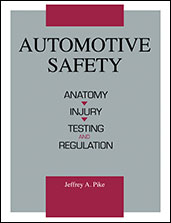Technical Paper
Computer Optimization of Camshaft Lift Profiles for a NASCAR V-8 Engine with Restrictor Plate
1996-12-01
962514
The introduction of carburetor restrictor plates in NASCAR racing in 1988 necessitated the redesign of some engine components, such as the camshaft and exhaust headers, to re-optimize engine performance. This paper describes how an engine performance computer simulation code was used to quickly study the effects of the restrictor plate on the “breathing” processes of the Ford NASCAR V8 engine and determine the optimal intake and exhaust cam lobe profiles to maximize wide-open throttle torque and horsepower. The resulting camshaft design produced over 40 additional horsepower and greater average torque over the useful engine speed range for super speedways. The interaction between exhaust wavedynamics (i.e., “tuning”) and cam events was investigated and shown to be of critical importance to the optimization of the engine's trapping efficiency.




